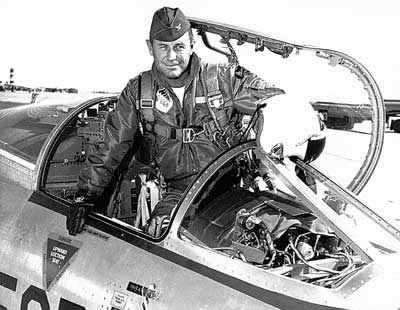Corporate Pilot
Well-Known Member
Time Fuel Distance Sea Level Climb Rate
2 Min 20 Sec 1,025 lb. 12 N.M. 35,000 Feet / Min
Above 35,000 ft Mach 1.7 seems to give the best high speed climb performance. Acceleration to 1.7 Mach at this altitude takes 4.2 Minutes, 1,500 pounds of fuel and 50 nautical miles. To go from 35,000 ft to 50,000 ft at 1.7 Mach takes 3.1 minutes, 1,000 lbs fuel and 55 nautical miles. The initial climb rate at FL 350 is just barely 12,000 fpm. To accelerate on up to Mach 2.0 requires another 4 minutes, 500 lbs fuel and 75 miles. So, brake release to fifty thousand feet & Mach 2 takes 13.5 minutes, 192 miles and 4,025 lbs fuel.
http://airplanedriver.net/study/f104.htm
2 Min 20 Sec 1,025 lb. 12 N.M. 35,000 Feet / Min
Above 35,000 ft Mach 1.7 seems to give the best high speed climb performance. Acceleration to 1.7 Mach at this altitude takes 4.2 Minutes, 1,500 pounds of fuel and 50 nautical miles. To go from 35,000 ft to 50,000 ft at 1.7 Mach takes 3.1 minutes, 1,000 lbs fuel and 55 nautical miles. The initial climb rate at FL 350 is just barely 12,000 fpm. To accelerate on up to Mach 2.0 requires another 4 minutes, 500 lbs fuel and 75 miles. So, brake release to fifty thousand feet & Mach 2 takes 13.5 minutes, 192 miles and 4,025 lbs fuel.
http://airplanedriver.net/study/f104.htm

